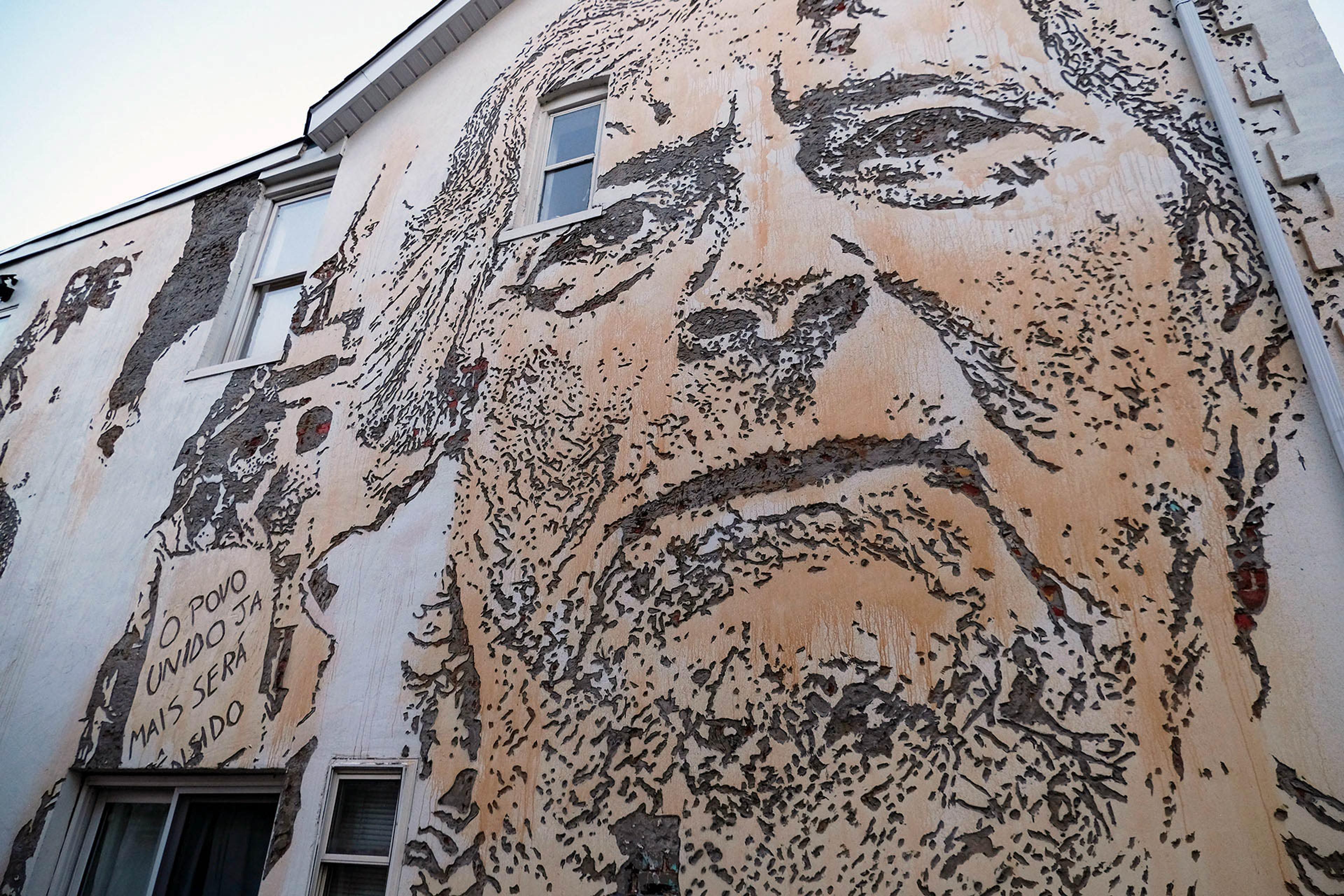
Cleaners' Action
The acclaimed artist Vhils created his first mural in Toronto, telling the story of a former Portuguese cleaning lady involved in the Cleaners’ Action movement that took place in the 1970s.

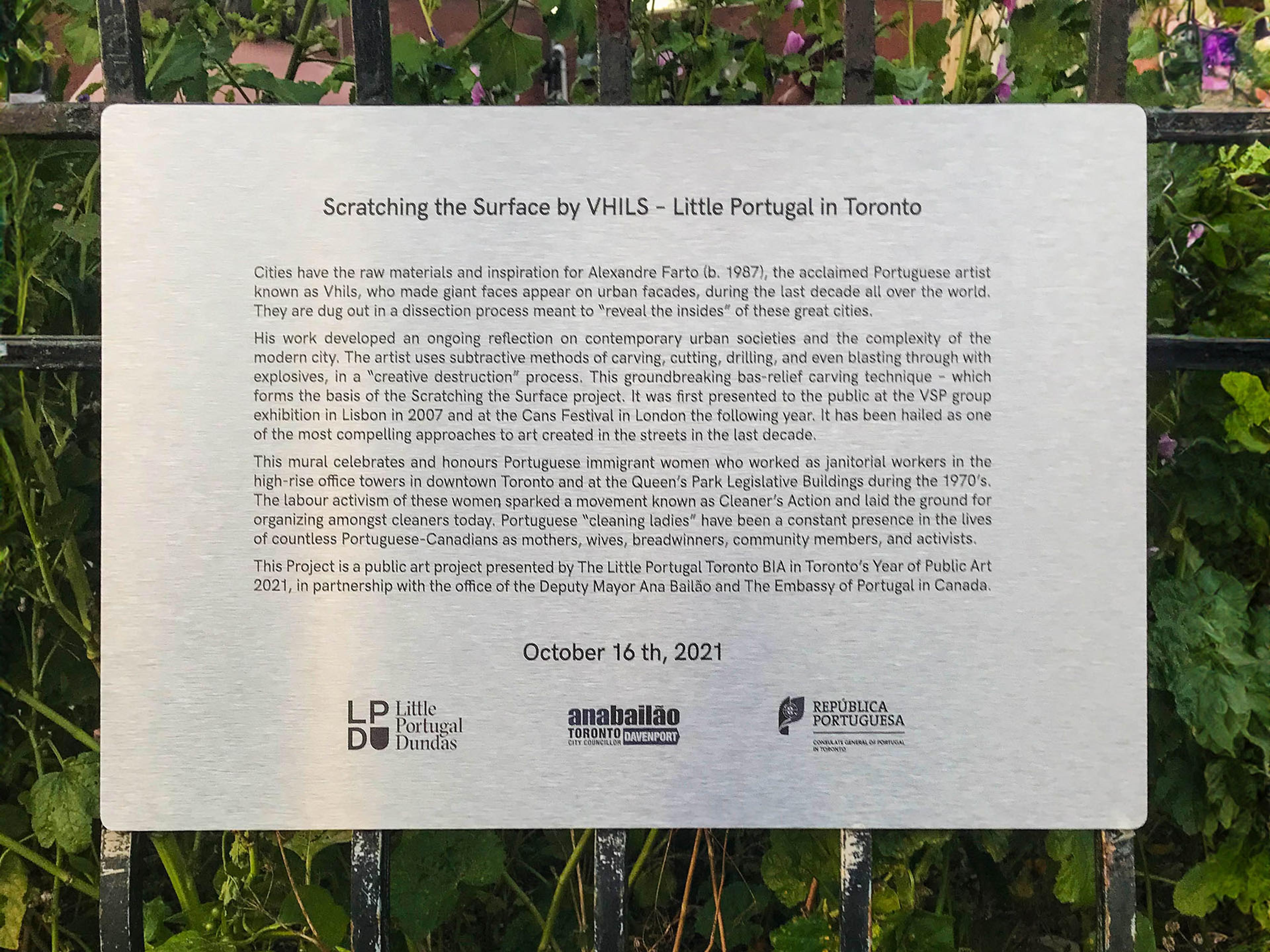
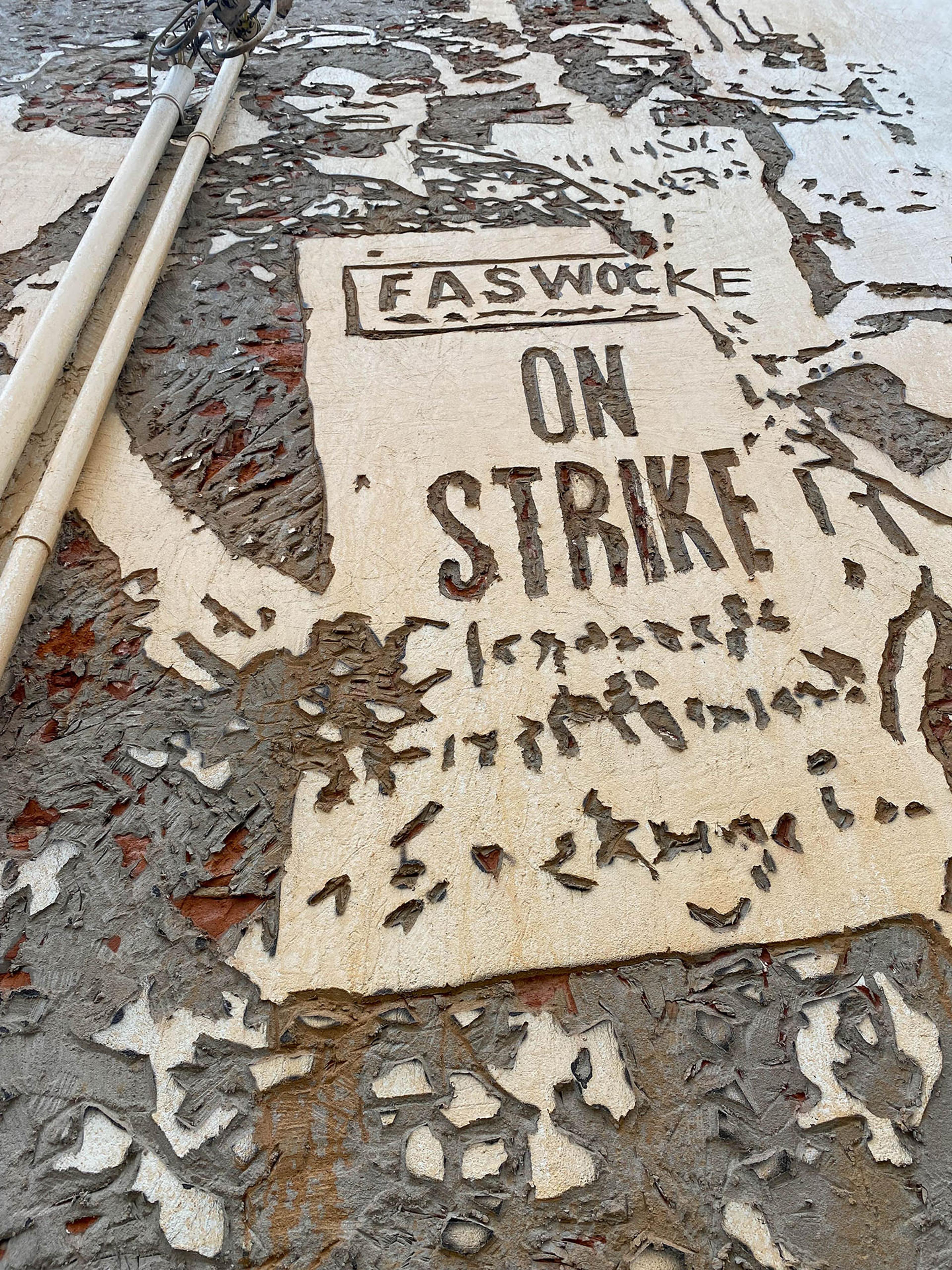
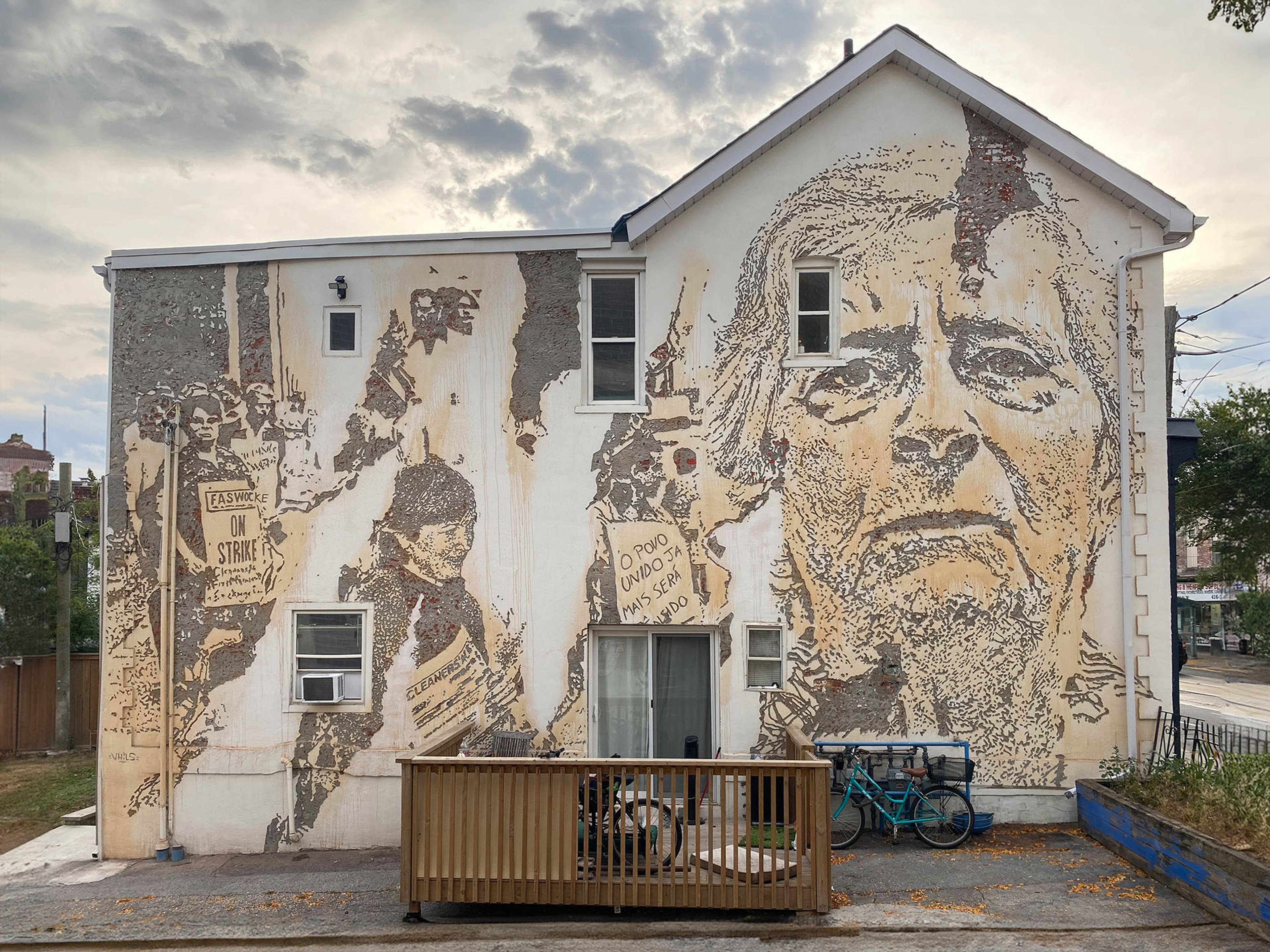
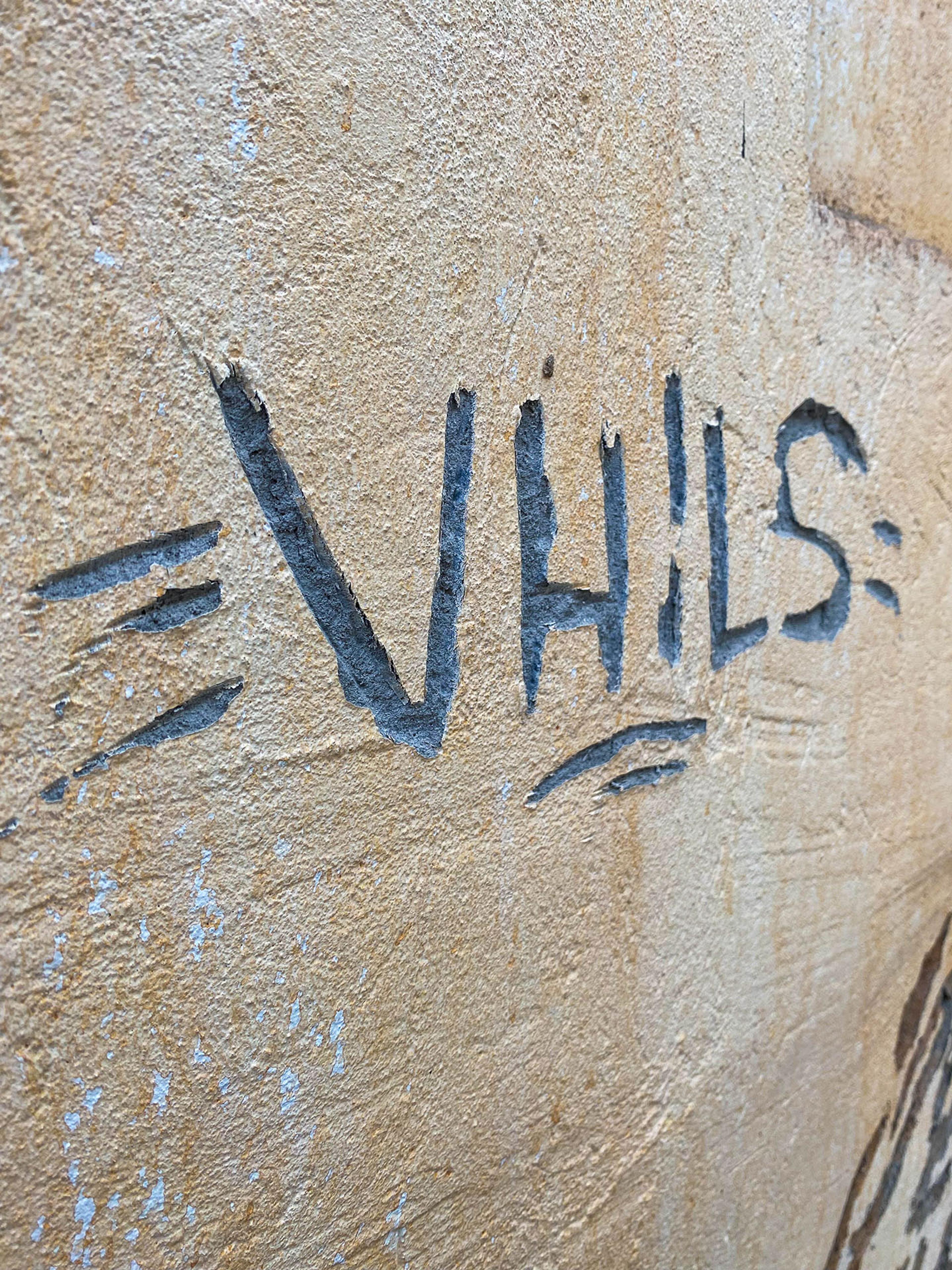

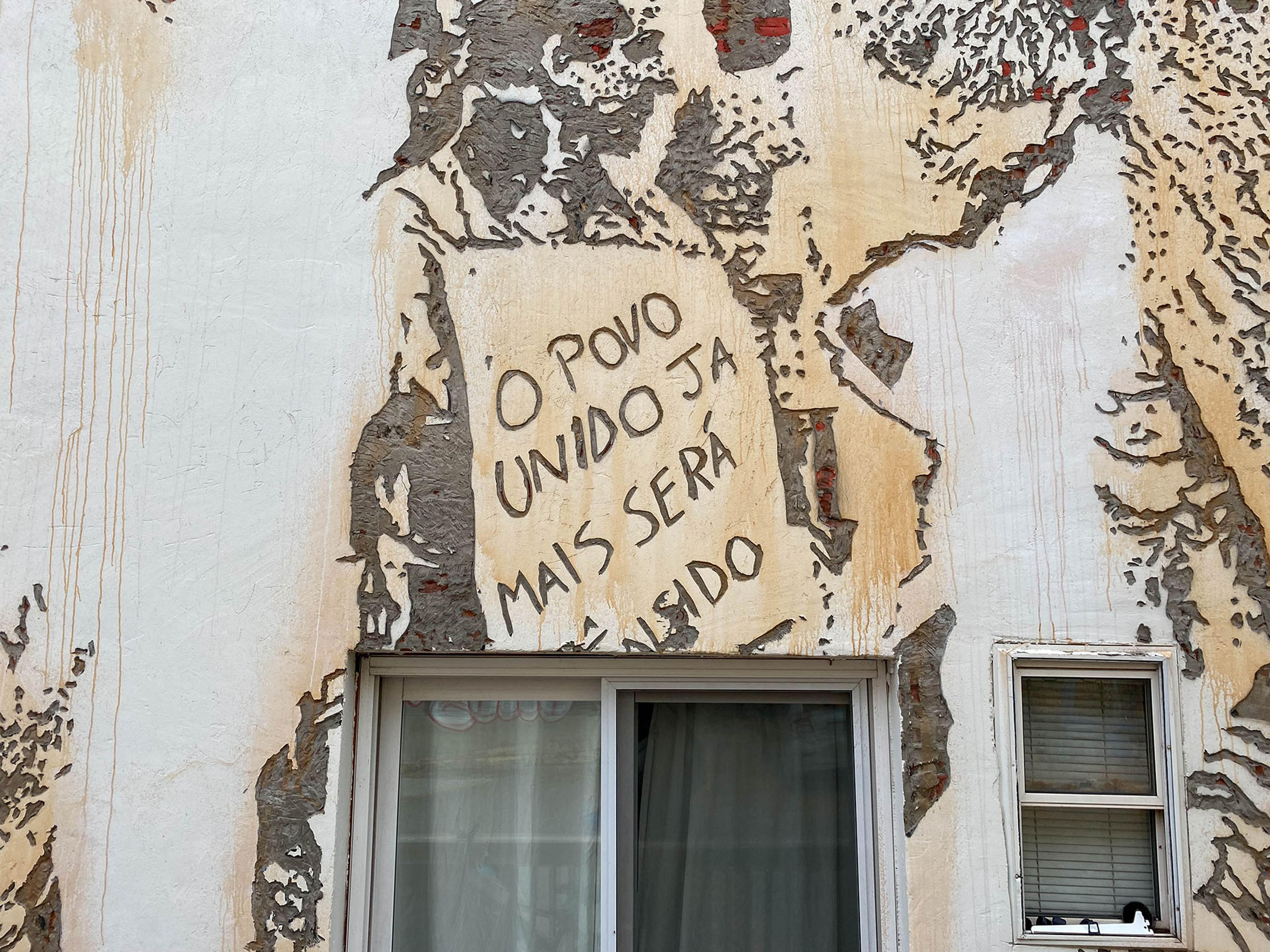
Cities have the raw materials and inspiration for Alexandre Farto (b. 1987), the acclaimed Portuguese artist known as Vhils, who made giant faces appear on urban facades, during the last decade all over the world. They are dug out in a dissection process meant to “reveal the insides” of these great cities. He has been interacting visually with the urban environment since his days as a prolific graffiti writer in the early-to-mid 2000s, until he realized that he was just “adding one layer over many others that have covered the walls over the years.”
His work developed an ongoing reflection on contemporary urban societies and the complexity of the modern city. The artist uses subtractive methods of carving, cutting, drilling, and even blasting through with explosives, in a “creative destruction” process. This groundbreaking bas-relief carving technique – which forms the basis of the Scratching the Surface project. It was first presented to the public at the VSP group exhibition in Lisbon in 2007 and at the Cans Festival in London the following year. It has been hailed as one of the most compelling approaches to art created in the streets in the last decade.
Vhils’ work, showcased around the world in both indoor and outdoor settings, has been described as brutal and complex, yet imbued with a simplicity that speaks to the core of human emotions. His work is an ongoing reflection on identity, on life in contemporary urban societies and their saturated environments. It speaks of effacement but also of resistance, of destruction yet also of beauty in this overwhelming setting, exploring the connections and contrasts, similarities and differences, between global and local realities.
His first project in Toronto, ‘Cleaners’ Action’ movement reflects another case of human resistance, and a tribute to the Portuguese immigrant women who worked as janitorial workers in the high-rise office towers downtown and at the Queen’s Park Legislative Buildings in the 1970’s. Portuguese “cleaning ladies” have been a constant presence in the lives of countless Portuguese-Canadians as mothers, wives, breadwinners, community members, and activists. Torontonians, in general, are familiar with them, though mostly as archetypes of Portuguese immigrant women, without knowing much about their lives. Still, these working women, who have played a major role in up-keeping their families, communities as well as the city, remain largely invisible in the story of Toronto.
The mural located on Dundas Street West, Little Portugal, features one of the women involved in the Cleaners’ Action movement, Mrs. Idalina Azevedo, associated with St. Christopher House, and a leader in a “wildcat” strike at the TD Towers in 1974, which brought about employment changes for the cleaners. For non-English speaking immigrant cleaning women, this was a major achievement and important event in Toronto’s labor history.
Source: City of Toronto, Office of the Deputy Mayor, Ana Bailão